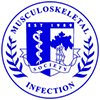Authors: Ketonis C., Aiyer A., Barr S., Shapiro I. , Hickok N., Parvizi J., Adams C., Thomas Jefferson University, Philadelphia PA
Title: Vancomycin-Tethered Bone Allografts: A Construct Superior to Elution Technologies
Purpose: Bone allograft is often used in orthopedic procedures, with infection remaining a devastating complication. We introduce an antibacterial bone graft that exhibits superior properties to current elution technologies.
Methods: Allograft modification: Morselized human bone was washed extensively and sequentially coupled: 2X with Fmoc-aminoethoxyethoxyacetate (Fmoc-AEEA); deprotected with 20% piperidine in Dimethylformamide (DMF); and coupled with vancomycin (VAN) for 12-16 h; VAN-bone was washed extensively with DMF and PBS to elute any antibiotic adsorbed during synthesis. VAN immunofluorescence: Control or VAN-bone was washed 5X with PBS, blocked with 10% FBS (1h), incubated with rabbit anti-VAN IgG (4°C, 12h) followed by an AlexaFluor 488-coupled goat anti-rabbit IgG (1h), and visualized by confocal laser microscopy. Elution Kinetics: Fluorescent dansyl-glycine modified VAN (dVAN) was coupled to allograft or adsorbed onto control un-modified allograft. The adsorbed dVAN and dVAN-bone were incubated in PBS, 37°C for up to 3 weeks and eluted dVAN measured daily. Kirby Bauer Disk Diffusion Assay: 10µl of eluent was spotted onto standard filter disks, placed on a uniform lawn of S.aureus and incubated at 37°C, overnight. Cleared zones around the filter papers were measured and compared with antibiotic standards. Antibiotic Activity: At 15 d post-elution, dVAN or adsorbed dVAN samples were sterilized with 70% ethanol, rinsed with PBS, and incubated with S. aureus (Ci=10^4 cfu) in trypticase soy broth (TSB), 37°C, for 10 h. Bacterial visualization: Non-adherent bacteria were removed by washing with PBS and adherent bacteria stained with the Live/Dead BacLight Kit (20mins, RT) to cause viable bacteria to fluoresce green. Samples were visualized by confocal microscopy. Bacterial counts: Non-adherent bacteria were removed by washing and adherent bacteria suspended by sonication in 0.3% Tween-80, 10mins, followed by plating on 3M® Petrifilms. Cell toxicity: Human Fetal Osteoblasts (hFOBs) were seeded on control and VAN-bone squares, stained with Cell Tracker after 2 d, and assessed with confocal microscopy.
Results: The fluorescent dansylated-VAN-bone showed no elution of dVAN whereas dVAN soaked allograft eluted almost all of the incorporated antibiotic into the surrounding media within the first 10 d (Fig 1). In parallel, as antibiotic elution waned, VAN-soaked allograft that was incubated in saline, produced successively smaller clearing zones on a bacterial lawn as a function of time for up to one week. Importantly, no zones of inhibition were measured with the covalently modified VAN-bone, consistent with no VAN elution due to its covalent bonding to the bone. After 15 d however, when elution was negligible from the VAN-soaked allograft, bacteria readily colonized the VAN-soaked allograft whereas VAN-bone remained free of bacterial attachment (Fig 2). When numbers of aherent bacteria were measured, VAN-bone showed a >90% reduction in bacterial load compared to the unmodified allograft. In fact, the VAN-bone retained its ability to inhibit bacterial attachement even after 60 days in saline or when stored dry. Importantly, immunostaining indicated that VAN-bone is still intact 300 d after synthesis.
Discuassion and Conclusion: We have described a covalent modification of allograft with antibiotics to effectively shield it from infection. The efficiency of attachment is independent of the parameters that usually affect impregnation techniques and ameliorate the concerns that accompany elution systems such as ensuring that sufficient antibiotic is adsorbed into the graft to allow adequate protection. The VAN-bone was not affected by exposure to physiologically relevant media and remained active after storage for >2 months dry or in saline. We have shown that the antibiotic is stably attached, does not dissociate in physiologic media, and results in long term inhibition of bacterial colonization. This is in sharp contrast to simple incorporation where antibiotic elution is complete within two weeks, leaving the graft unprotected thereafter. Our studies extend to 10 months following synthesis, suggesting that this new generation of infection-resistant grafts could potentially provide protection of the allograft from the time of implantation through the period of vascularization and incorporation. Such grafts hold great promise for combating bacterial colonization associated with transplanted orthopaedic tissues.

